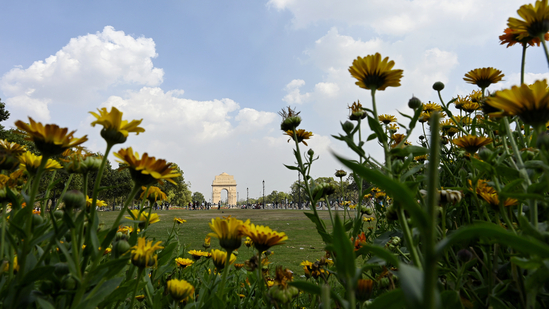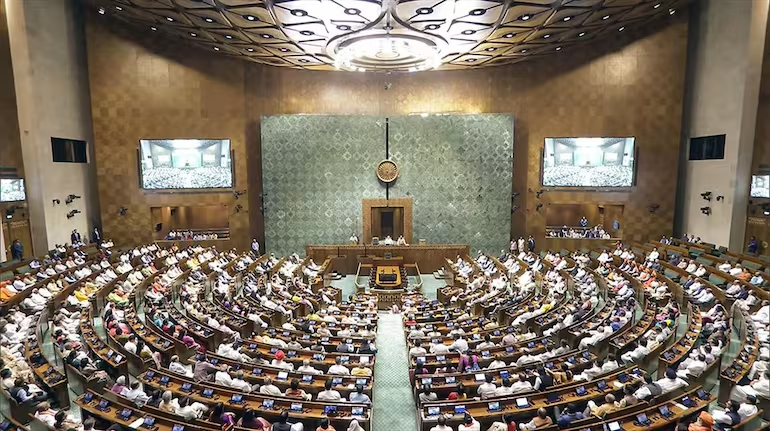Delhiites woke up to a noticeable chill on Saturday, March 29, 2025, as the national capital experienced a significant temperature drop, offering a brief respite from the soaring mercury earlier this week. The Air Quality Index (AQI), meanwhile, held steady in the ‘moderate’ category, providing a silver lining amid fluctuating pollution levels in recent days.
Temperature Takes a Tumble
According to the India Meteorological Department (IMD), Delhi’s minimum temperature dipped to 15 degrees Celsius on Saturday morning, a sharp decline from the 18 degrees recorded on Friday. The maximum temperature is forecasted to hover around 31 degrees Celsius, down from highs nearing 37 degrees earlier in the week. Posts on X and reports from outlets like India Today highlighted a dramatic 7-degree drop over two days, a shift attributed to strong surface winds and partly cloudy skies sweeping across the Indo-Gangetic Plains.
IMD officials noted that the sudden cooling was triggered by a western disturbance influencing northwest India. “Strong winds at speeds of 15-25 km/h prevailed during the daytime, bringing down temperatures significantly,” an IMD spokesperson said. The forecast predicts partly cloudy conditions persisting through Saturday, with a possibility of light drizzle in isolated areas by evening. However, this relief may be short-lived, as temperatures are expected to climb again, potentially hitting 40 degrees Celsius by early April.
Air Quality Holds Steady
On the air quality front, Delhi recorded an AQI of 115 at 3 p.m. IST on March 29, as per the Central Pollution Control Board (CPCB), placing it firmly in the ‘moderate’ category (101-200). This marks an improvement from Friday’s AQI of 231, which had slipped into the ‘poor’ range, prompting the reinstatement of Stage I of the Graded Response Action Plan (GRAP) by the Commission for Air Quality Management (CAQM) earlier this week. Saturday’s reading of 157 at 8 a.m. had already signaled a positive shift, a trend that continued into the afternoon.
The CPCB classifies an AQI between 101 and 200 as ‘moderate,’ indicating breathing discomfort for sensitive individuals but posing no immediate threat to the general public. The improvement is largely credited to the prevailing winds, which have dispersed pollutants after days of stagnant air trapped vehicular emissions and dust. “The wind speed and direction have been favorable today, flushing out some of the particulate matter,” explained a CAQM official. Neighboring areas showed mixed results: Gurugram reported an AQI of 142 (moderate), while Ghaziabad’s AQI stood at 208 (poor) by late afternoon.
A Week of Fluctuations
Delhi’s air quality and weather have been on a rollercoaster this month. On March 15, the city recorded its lowest AQI of 85 (‘satisfactory’) for the January-March period in three years, thanks to light rainfall and favorable winds. However, as temperatures rose sharply—hitting 36.2 degrees Celsius on March 14—pollution levels crept back into the ‘poor’ category by March 25, with an AQI of 247. The CAQM’s invocation of GRAP Stage I earlier this week included measures like dust control at construction sites and increased road sweeping, which appear to have contributed to Saturday’s stabilization.
The IMD’s earlier warnings of a heatwave by late March had materialized briefly, with daytime temperatures nearing 40 degrees on March 26. Residents, accustomed to Delhi’s notorious pollution spikes in winter, expressed cautious optimism about the current ‘moderate’ AQI. “It’s a relief to breathe easier today, but we know it won’t last with summer coming,” said Priya Sharma, a Dwarka resident.
Looking Ahead
The IMD predicts a return to warmer conditions starting Sunday, March 30, with maximum temperatures likely to climb to 34 degrees Celsius and continue rising into the low 40s by mid-April. The air quality outlook remains uncertain, with the Indian Institute of Tropical Meteorology (IITM) forecasting AQI levels to hover between ‘moderate’ and ‘poor’ over the next six days, depending on wind patterns and vehicular emissions.
Environmentalists urge sustained efforts to maintain air quality gains. “While today’s numbers are encouraging, Delhi’s pollution problem is far from solved. We need long-term measures—more green cover, stricter emission norms—not just reliance on weather,” said Sunita Narain of the Centre for Science and Environment.
For now, Delhi enjoys a fleeting moment of cooler air and tolerable pollution levels. As the city braces for summer’s heat and the challenges it brings, Saturday’s weather offers a welcome pause, reminding residents of the delicate balance between nature and urban life.
 Indian Thought Latest News & Views
Indian Thought Latest News & Views



